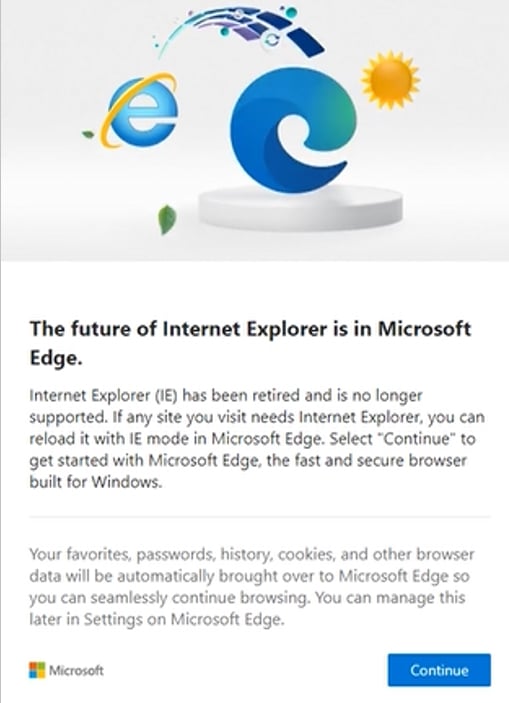The long-running jokes on Internet Explorer will become history as Windows 10 is disabling it from February 14. This will happen through an update to the new browser Microsoft Edge which removes the out-of-support IE from this version of the OS.
The update will be specific to Edge and not be pushed through the Windows updates channel. Both consumers and commercial users will receive this update which cannot be rolled back. This means that you cannot reverse the changes, and all the redirects from IE to Edge will be included in all future updates.
Those users who are still using Internet Explorer 11 and trying to access IE icons or entry points will be redirected to Microsoft Edge. Their data and settings will be carried forward for a seamless transition.
Which Windows versions have support for IE?
While IE is heading toward the end, few exceptions exist, according to Microsoft’s FAQ document.
- Windows 8.1 (note: Microsoft Edge version 109 will be the last supported version on Windows 8.1 – learn more)
- Windows 7 Extended Security Updates (ESU) (note: Microsoft Edge version 109 will be the last supported version on Windows 7 – learn more)
- Windows Server SAC (all versions)
- Windows 10 IoT Long-Term Servicing Channel (LTSC) (all versions)
- Windows Server LTSC (all versions)
- Windows 10 client LTSC (all versions)
- Windows 10 China Government Edition
Internet Explorer mode will still be available on Microsoft Edge, and the Internet Explorer platform (MSHTML/Trident), including WebOC and COM automation, will remain in support for the foreseeable future.
The latter will help access legacy sites designed for Internet Explorer. Edge has made it possible for all users to transition without losing accessing to older web applications and sites that require a certain browser.
